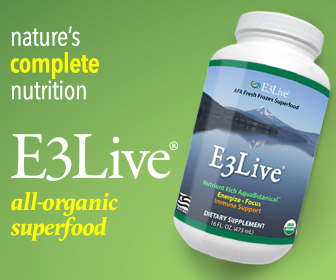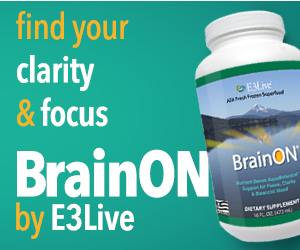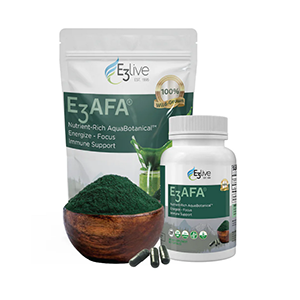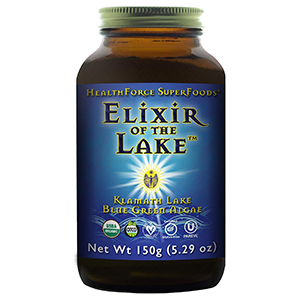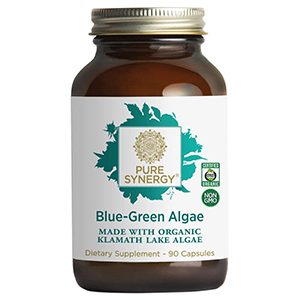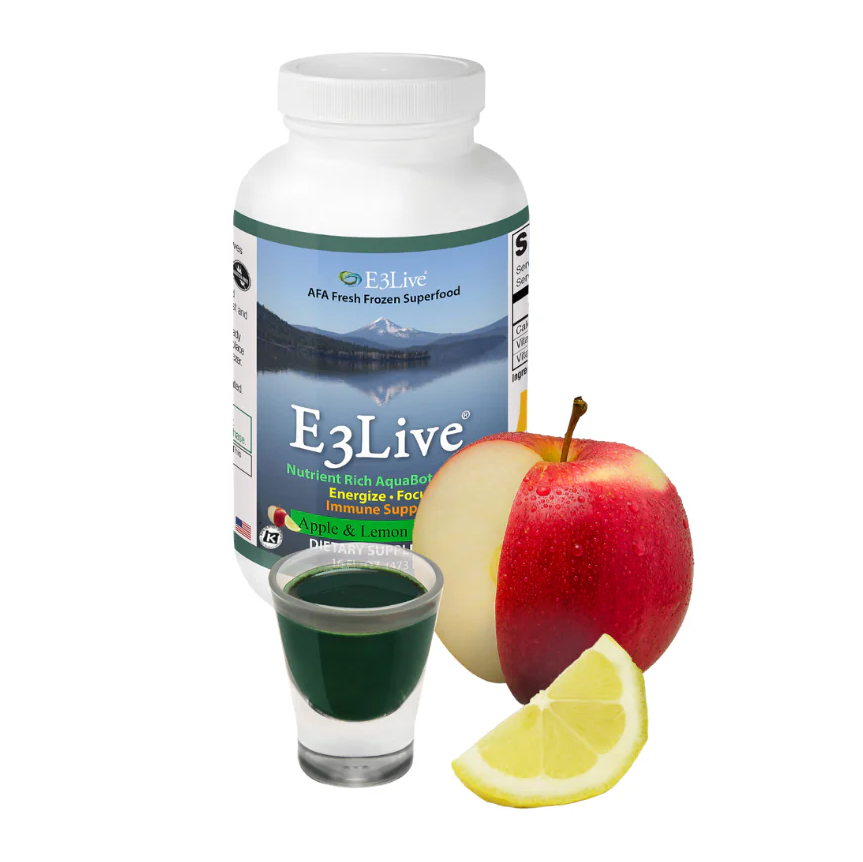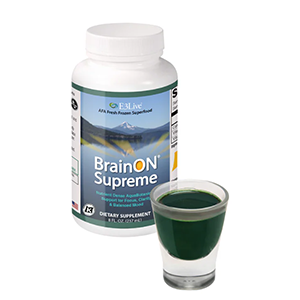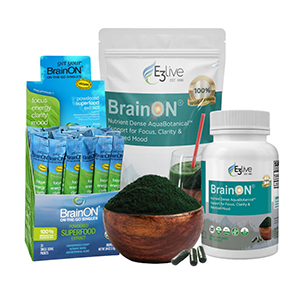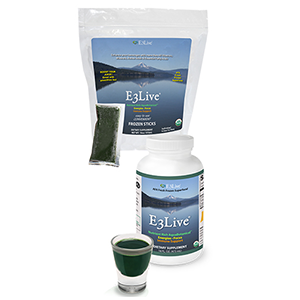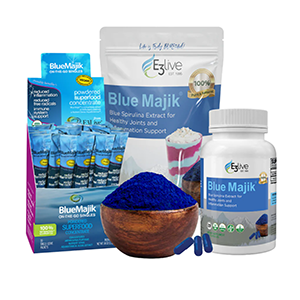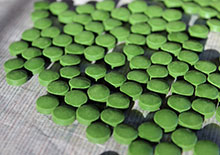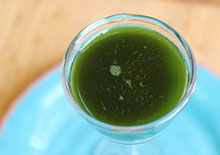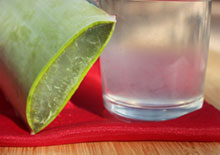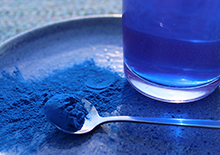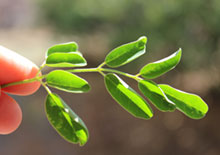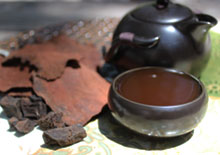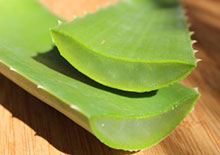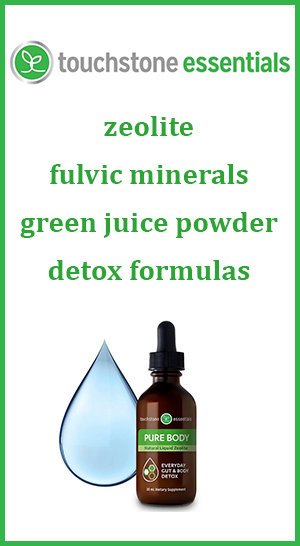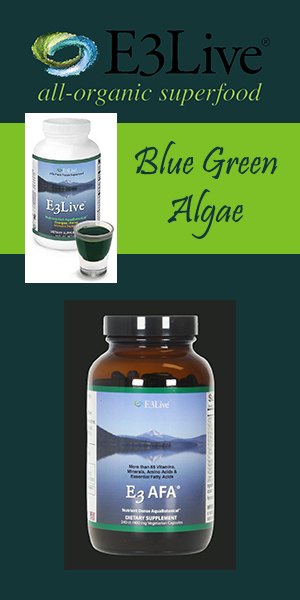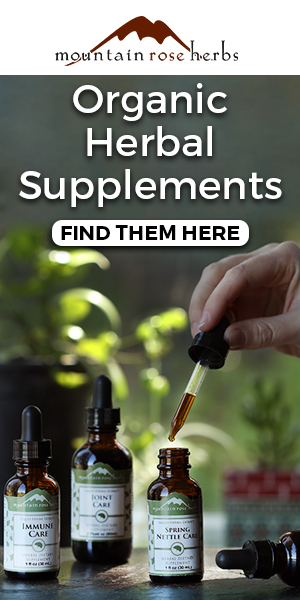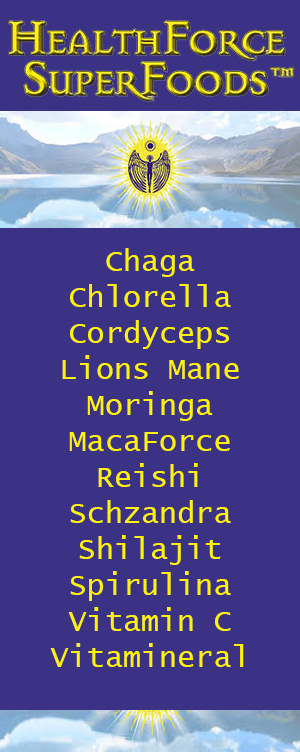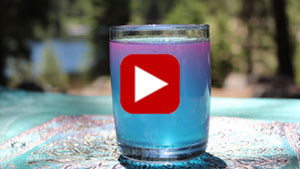- Home
- Top Superfoods
- Aphanizomenon flos-aquae
Aphanizomenon flos-aquae Blue-Green Algae, Are AFA Supplements Toxic?
What is AFA? | Cyanotoxin Controversy | About Microcystins | AFA Quality Controls | Source of BMAA? | Purchasing AFA | Recommended Suppliers | Precautions | Shop
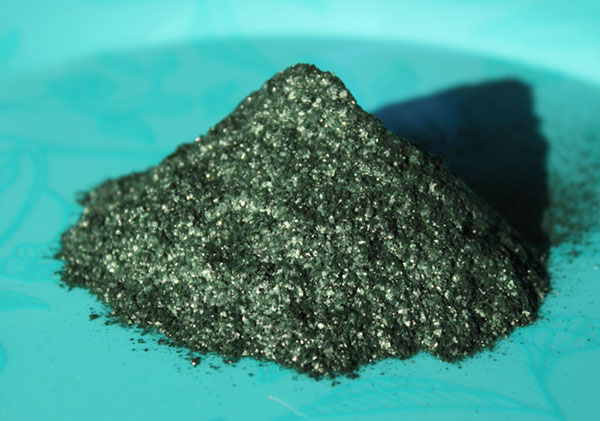
Aphanizomenon flos-aquae, or AFA for short, is a dietary microalgae supplement currently sourced primarily from Upper Klamath Lake, located in the western U.S. state of Oregon. Sometimes referred to generically as "blue-green algae", it is an edible microalgae species known for its iridescent powders and deeply layered blue-green, indigo and violet pigmentation when mixed into water.
It has been harvested since the early 1980's as a supplement by a handful of reputable commercial suppliers. We've personally been using it as a morning micronutrient off and on since the mid 90's.
Table of Contents
What is AFA? | Cyanotoxin Controversy | About Microcystins | AFA Quality Controls | Source of BMAA? | Purchasing AFA | Recommended Suppliers | Precautions | Shop
AFA is a particular type of cyanobacteria, like spirulina, that is often considered a top superfood for its potent nutritional profile as a source of amino acids, polyunsaturated fats, enzymes, antioxidants, minerals, vitamins, nucleotides, chlorophyll, phenylethylamine (PEA) and phycocyanin.
Microalgae's, like these blue-green species, because of their ability to rapidly photosynthesize and concentrate phytonutrients, like protein, are believed to be in the near future an extensively utilized commercial food source by the year 2050. This is when the Earth's population is expected to reach nearly 10 billion people and according to scientific reports will require a 70% increase in food supply.
AFA from Upper Klamath Lake and Cyanotoxin Controversy
Upper Klamath Lake is a naturally eutrophic water body that is 25 miles (40 km) long and 8 miles (13 km) wide.
The term "eutrophic", which
in Greek means "well-nourished", refers to its high biological
productivity due to its concentration of nutrients which support an
abundant algal biomass, mainly the Aphanizomenon flos-aquae species, as well as other aquatic life.
Over
the years, however, there has been some public controversy about
whether blue-green algae in the form of AFA can be contaminated with
other species or algae-producing toxins.
Here on this page, we present information according to our personal investigation into Upper Klamath Lake derived AFA and its potential cyanotoxin content. We hope our gathered findings may be of value to you if you are either a current blue-green algae consumer or are considering dietary supplementation.
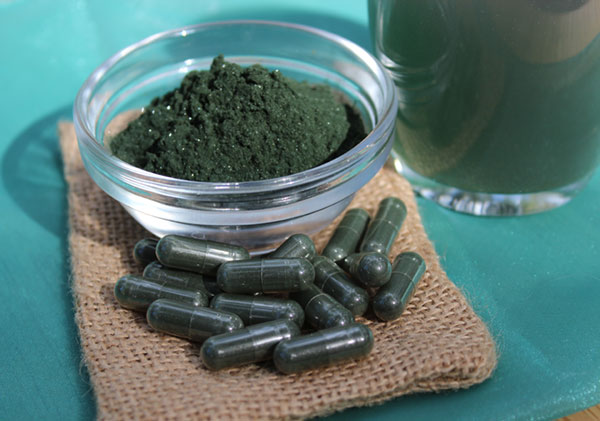
Aphanizomenon flos-aquae as a Cyanobacteria
Aphanizomenon flos-aquae, in Latin means "invisible flower of the water", and while it might sound a bit odd to consume an actual cyanobacteria to the AFA newbie, this is a non-toxic blue-green algae species that is completely digestible and is fact a highly nutritious supplement to include in the human diet.
While the Aphanizomenon flos-aquae species comes from the phylum called Cyanobacteria, not all cyanobacteria are considered healthy to ingest as a food source.

Out of an estimated 150 genera and 2000 different species, only about
46 are identified as being toxic. Most under this general
classification also cannot be further processed and ingested as their
structure is not an edible format digestible by humans and/or nutritious
to consume.
Likewise, some are known to produce and
concentrate various "cyanotoxins", some of which have been shown to
cause hepatotoxic and neurodegenerative conditions in mammals and other
aquatic life forms. This has become a big problem, for example, in the
Great Lakes region of the U.S., where cyanobacteria are creating serious
toxic effects to the water and related waterway systems. (*)
As a wild species, AFA (the source of blue-green algae supplements) has been under a lot of scrutiny regarding its ability to produce or become contaminated with certain cyanotoxins, particularly microcystin and BMAA.
About the Cyanotoxins Known as Microcystins
First off, the AFA species cannot produce the group of cyanobacteria toxins known as microcystins. Microcystins are produced by other cyanobacteria species, like Microcystis aeruginosa, or other genera specifically:
- Microcystis
- Planktothrix
- Anabaena
- Fischerella
- Gloeotrichia
- Nodularia
- Nostoc
- Oscillatoria
The most toxic microcystin known to cause chronic liver damage with extended intake is microcystin-LR.
While AFA is a non-toxic cyanobacteria, it can potentially become contaminated with microcystin producing species.
The only one identified to grow in Upper Klamath Lake is the Microcystis genus.
From our investigative research, we found that growth usually occurs in minor amounts, if at all, later in the summer after prime AFA harvesting. The actual cyanotoxin microcystin, contained within the cyanobacterial cell, is also often released as cells open in their dying-off stage. (Source)
Additionally, microcystin-producing algae are apparently a very minor incidence and only known to bloom in a certain area of the lake not traditionally harvested for commercial blue-green algae supplement purposes.
AFA Quality Controls and Certificate of Analysis
All suppliers are highly skilled at monitoring AFA blue-green algae through its various growth cycles to ensure it is not contaminated with other species, like Microcystis aeruginosa. Moreover, elaborate micro-filtration systems are also in place to make sure the algae is free of contaminants.
As one of the company's we contacted put it:
"The entire AFA industry has always placed safety and purity at the top of the priority list. Indeed, it would have ended the industry long ago if anything less than that was the case."
The AFA supplements we recommend are now actually USDA Certified Organic and/or Certified Organic by the Oregon Tilth and undergo appropriate quality controls, extensive filtration processing and thorough testing for possible contaminants.
The EPA's (U.S. Environmental Protection Agency) "Drinking
Water Health Advisory for Microcystins" is 1.6 micrograms per liter for
school-age children through adults. The Oregon state limit for microcystins is 1µg/L microcystin-LR or 1 part per million for adults.
According to our direct communications with the ALA product company E3Live, they told us that:
"We closely monitor the levels of microcystin before ever putting our harvesting equipment into the lake, to ensure safety and purity of the product. Microcystin levels are monitored throughout the year as well, even during the non-harvest season. Once safe conditions are established during harvest, the AFA is still closely monitored and tested for microcystin levels, throughout the entire harvest/production process. Once the product is ready to be bottled, yet another microcystin test is conducted. The finished product is then sent to independent 3rd party labs for test confirmation. Only once we receive results that the product is safe for consumption is it released for sale. We have never sold any product that would exceed the safety levels Oregon Department of Agriculture has set for microcystin."
All reputable AFA supplement suppliers provide the Certificate of Analysis upon request, showing specific results after third party lab analysis. The test results from the three company's we researched showed microcystin levels well below the recommended safety limit.
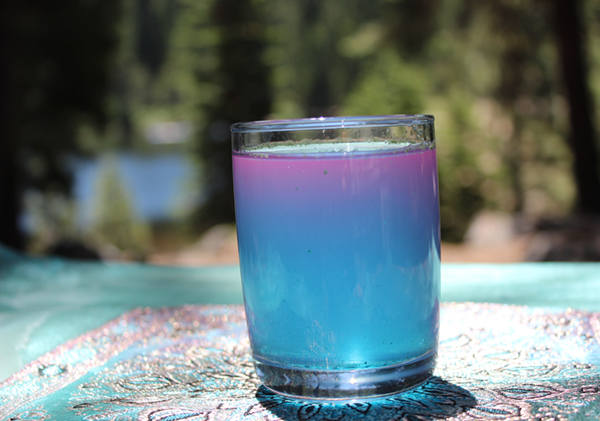
Is AFA a Source of BMAA or Other Cyanotoxins?
BMAA, or β-Methylamino-L-alanine, is a known neurotoxin that is produced by cyanobacteria species. It has been found in tap water, marine fish and is especially concentrated in shellfish.
Anytime you're dealing with wild water systems that can grow cyanobacteria, there is usually a potential risk that substances like BMAA and other cyanotoxins like cylindrospermopsin, anatoxin-a and saxitoxin can be produced when algal blooms occur.
In our research, however, we found that all suppliers contacted had NEVER had any experience with BMAA contamination, with results coming up "non-detectable" for this toxin every time tested.
The Aphanizomenon flos-aquae strain found in Upper Klamath Lake is actually believed to be void of producing BMAA as well as other cyanotoxins.
Original rumors linking the Klamath Lake variety to BMAA contamination began to circulate many years ago. These claims however were based on AFA toxin-producing strains, such as Aphanizomenon gracile, found in Germany and Poland. In this research at least one of these strains of Aphanizomenon flos-aquae labeled as toxic has been shown to have been misidentified. This is according to an update by the Oregon Health Authority and their Oregon Harmful Algae Bloom Surveillance Program. (Source)
Aphanizomenon flos-aquae exemption from cyanotoxin-producing genus list
"Aphanizomenon flos-aquae (AFA) is a species of cyanobacteria commonly found in Oregon’s fresh waters. Although some studies have shown this species to produce toxins in other parts of the world, subsequent evaluations of that work show that the species either was or likely was misidentified."
Oregon Health Authority, Oregon Harmful Algae Bloom Surveillance Program
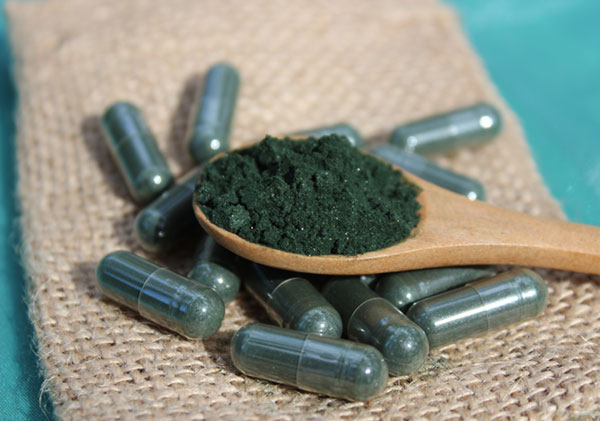
Purchasing Certified Organic and Tested AFA Supplements
It's really up to each manufacturer to ensure purity of their product as there are currently no legally enforced standards, just recommendations by various agencies such as the FDA, EPA and WHO.
While cyanotoxins have been shown to be rare and even non-detectable in Klamath Lake sourced algae supplements, we feel it's always best to purchase your AFA products from those that maintain strict harvesting and testing procedures, just to err on the side of caution.
We therefore only endorse suppliers who are Certified Organic by Oregon Tilth and by USDA standards as well as provide transparency regarding testing with a Certificate of Analysis.
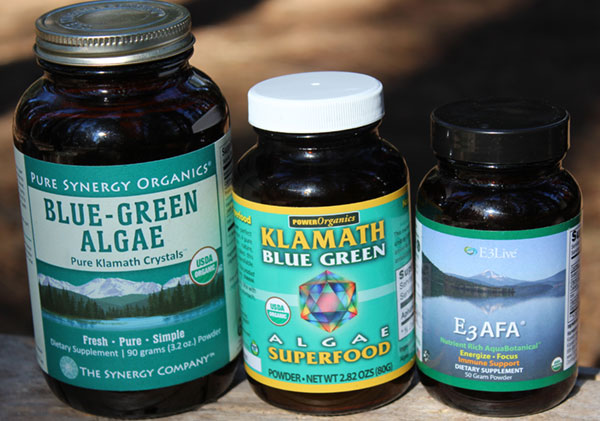
Recommended Aphanizomenon flos-aquae Blue-Green Algae Suppliers
These are our top recommended AFA blue-green algae supplement suppliers. E3Live happens to be our personal favorite.
Since 1991, they are a company dedicated to providing some of the best high quality
blue-green algae products on the market. Power Organics is also a highly reputable company, established in 1989.
1) E3Live - fresh, frozen liquid or freeze-dried powders and capsules as well as specific formulations
2) The Synergy Company - powder flakes or capsules
3) Elixir of the Lake, Healthforce Superfoods - powder or capsules
4) Power Organics - powder or capsules
Precautions:
AFA, when taken in higher doses, may cause cleansing reactions in some people. Consult your healthcare practitioner prior to use when pregnant, nursing, taking prescription medications or if you have a serious medical condition.
Shop Related Products (About Affiliates & Amazon Associate Paid Links)
Affiliate Disclaimer: This section contains affiliate product links. If you make a purchase through our recommended links, we receive a small commission at no additional cost to you. Thanks for the support.

